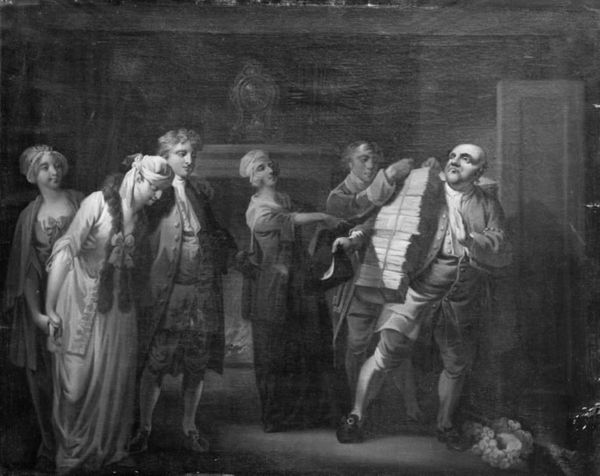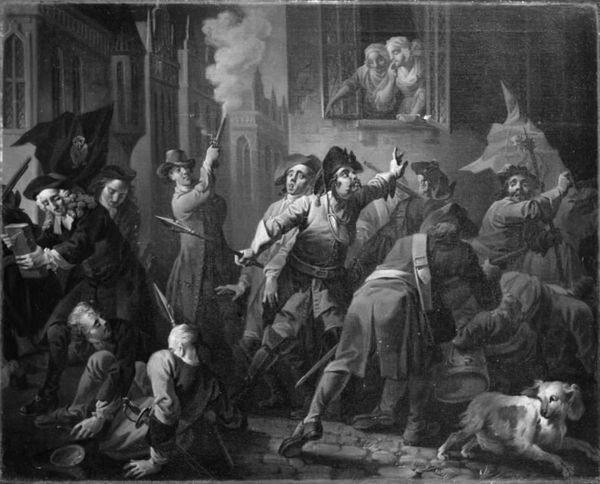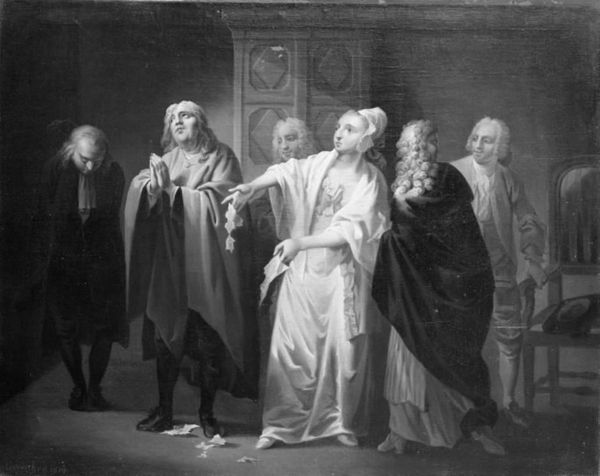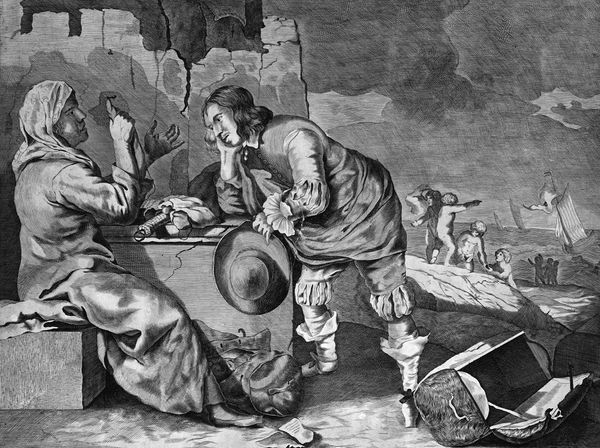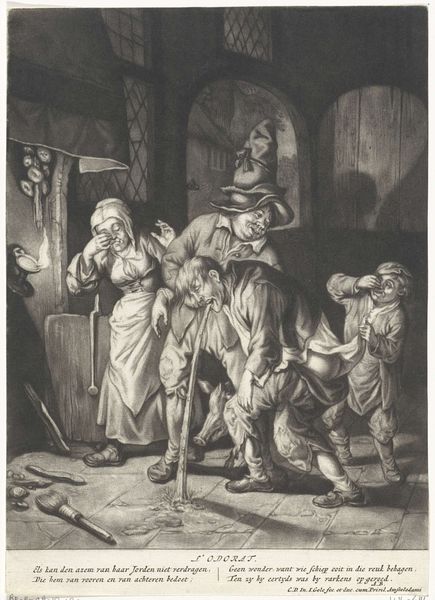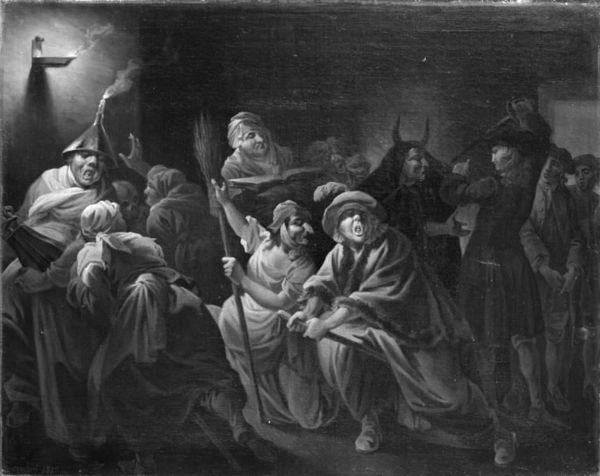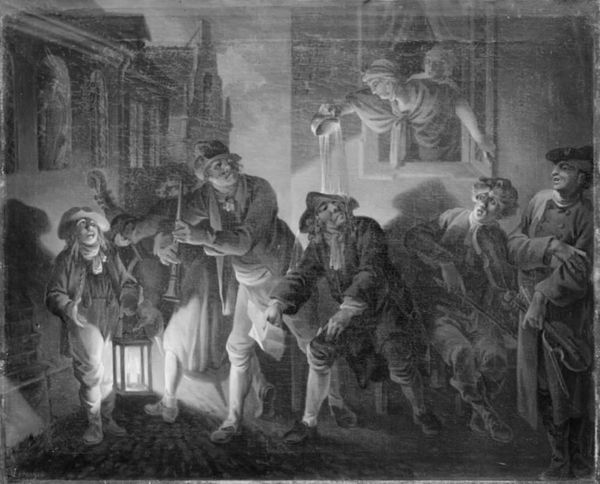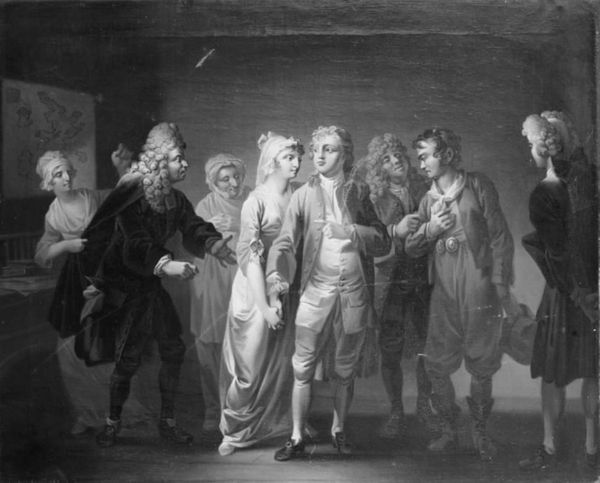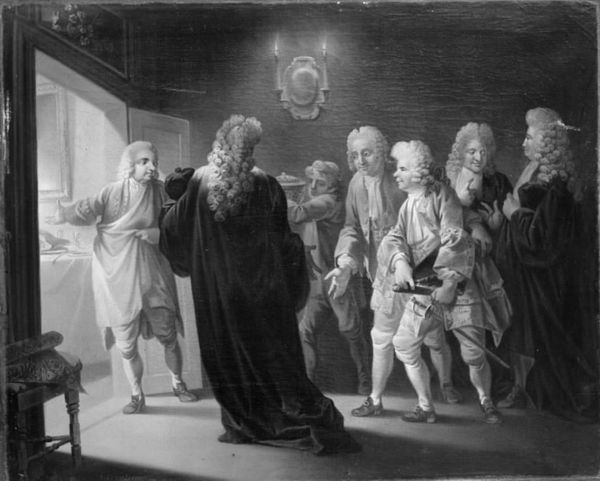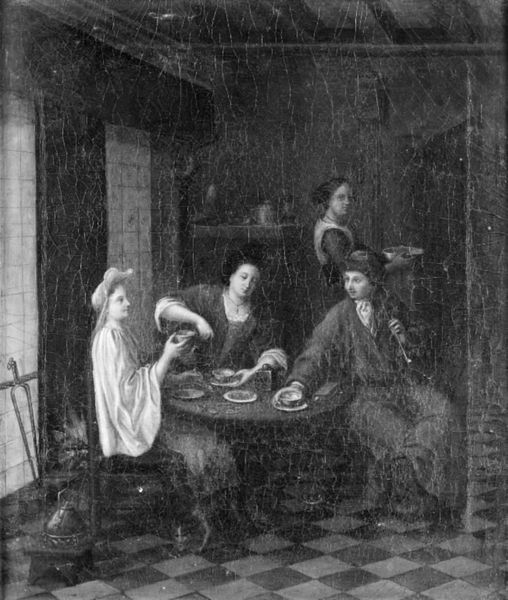
Dimensions: 58.5 cm (height) x 72 cm (width) (Netto)
Editor: This tempera on canvas, "Den elvte Juni, V. akt, 1. scene" created between 1761 and 1828 by C.A. Lorentzen, strikes me as incredibly dramatic, almost theatrical. It's predominantly monochrome, heightening the intensity. How do you interpret this work, considering its historical context? Curator: I see this piece as deeply embedded in the social and political currents of its time. History painting during the late 18th and early 19th centuries was often used to convey moral or nationalistic messages. Does this look like realism or more of an aspirational dramatization to you? Editor: I see touches of both. It seems like an attempt at realism stylized by Neoclassical ideals, I think. I guess what stands out is how "genre painting" could interact with grand narratives. Curator: Precisely! Genre scenes gained importance as symbols of civic virtue. What do you think that the "black and white" tonality and theatrical gestures do to help communicate a certain feeling, sentiment, or "virtue?" Does the combination come off as moral or "historic" for the audience? Editor: The monochrome definitely elevates the drama, creating a sense of seriousness befitting a historical scene. And the theatrical gestures make the emotions palpable. Do you see a specific sociopolitical agenda at play here? Curator: It seems to valorize certain figures within a very dramatic scene, almost creating a spectacle, while seemingly remaining politically ambiguous, though closer inspection may show it upholds establishment viewpoints through history. The play that's illustrated probably held different significance then than now, but at its heart this painting seems interested in how the commoner can express complex feelings. What do you think? Editor: That makes sense. I guess by showing this dramatic scene and its affectation of neoclassical theatricality the viewer gets caught in a reflection that has as much to do with popular art as with political art. Curator: Absolutely. The museum’s role then becomes about interpreting what that historical combination meant then and means now. Editor: That is such an intriguing point. I will definitely keep that in mind as I further examine history paintings.
Comments
No comments
Be the first to comment and join the conversation on the ultimate creative platform.
